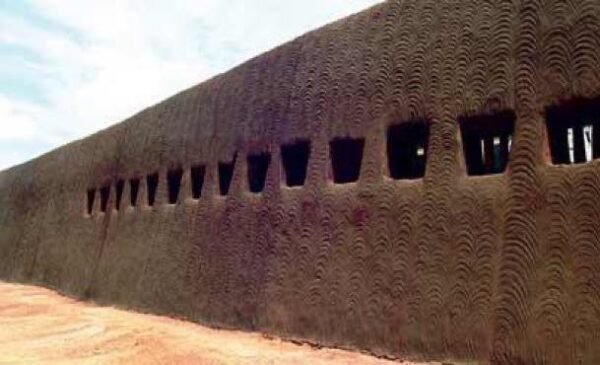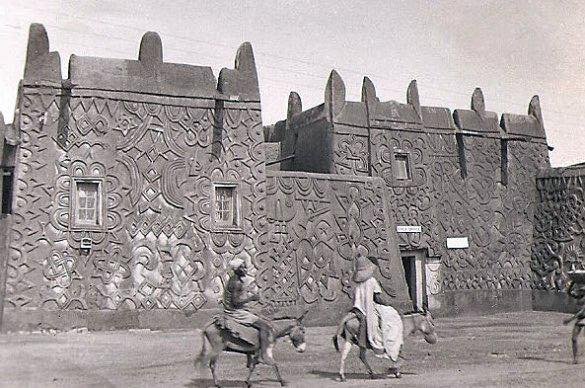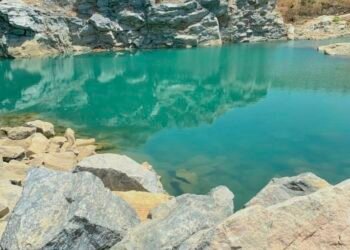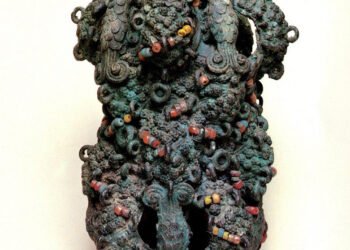The Ancient Kano City Walls: A Millennium of History and Heritage
For more than a millennium, the Ancient City Walls of Kano have stood as obdurate evidence of African achievement. These significant earthworks, the vanity of one dynasty in the 11th century, protected one of Africa’s more sophisticated commercial centres.
They guarded a flourishing centre of Islamic learning and trade, where trans-Saharan caravan routes exchanged commodities and ideas. They stand as a testament to the contemporary heritage of Hausa civilisation, symbolising power and the high quality of design.
Read Also: Iho Eleru Skull: Ancient Human Fossil From Nigeria
Despite all the ravages of time and city expansion, the surviving buildings are as prosperous and pre-colonial a legacy, and as tangible a connection to an era of mighty kingdoms and enduring cultural pride.
Table of Contents
Kano City African History
In 1095 AD, King Gijimasu of Kano had a dream: a defence ring to shield his prosperous city.
The Sahel was a precarious world where rival kingdoms and raiders continually threatened the emergence of incipient states. Security was not a luxury but a necessity for survival and continued prosperity.

King Gijimasu’s vision was to create a defence so powerful that it would ward off any threat. The grand scheme was enormous in planning and collective effort. It was not a work of one era but a legacy piece which would endure through generations. The first task set the construction of what would be medieval Africa’s most vigorous defence.
This initial investment in security allowed Kano to grow securely into a great centre of commerce and culture. The king’s prudence laid the literal foundations for centuries of security and prosperity.
Read Also: Iyake Lake: Nigeria’s Breathtaking Hidden Natural Wonder
His vision altered the city’s destiny, proving that strong leadership could shape history through bold, concrete actions. The walls began as a vision of security and became a symbol of enduring energy.
The Ancient Kano City Walls
The scale of the city walls of Kano alone is breathtaking even in the modern era. Imagine a wall of earth covering over fourteen kilometres, encasing the historic town as a whole.
They were not just barriers; they formed a complex system of defence aimed at providing a comprehensive defence.
The walls towered to a height of fifteen meters, with a twelve-meter-thick foundation, giving a commanding profile against the terrain.
A steep defence ditch ran alongside the building, serving as another layer of defence. Wide walkway rampart tumbled down the ridge, allowing guards to march around it in a complete circle. Hand-built from native earth, clay, and straw, these walls are a brilliant example of pre-colonial African skill and collective capability.
Read Also: The Owu Wall: Ancient Fortress of Nigeria’s Yoruba Kingdom
This wonderful project required exceptional organisational skills and a judicious understanding of materials and design, demonstrating a level of engineering excellence typical of the time.
Ancient Kano City Walls: – Kano City Monuments
Admission to Kano’s walled city was regulated rigidly through a system of gigantic gates referred to as Kofar.
These structures were more than just windows in the wall; they were key checkpoints that sacrificed security for economic gain.
Historical accounts suggest that there were likely thirteen or fifteen gates, each with a specific purpose. Kofar Mata and Kofar Nassarawa served primarily the active stream of merchant caravans and mercantile goods.
Other gates were reserved entrances for the Emir’s palace, reinforcing social organisation and power. These gates were always bustling thoroughfares where guards observed travellers, officials levied taxes, and news of far places first came to the city.

Read Also: The Great wall of Benin: Nigeria’s Forgotten Ancient Marvel
The Ancient Kano City Walls History
Protected by the imposing walls, the city of Kano lived in its own world. At the city centre was Dala Hill, the original settlement site that offered a bird’s-eye view of the growing city.
In the following, the legendary Kurmi Market was bustling with commerce, one of the most enduring and ancient market hubs in Africa.
For hundreds of years, this dense bazaar has served as the commercial centre of the kingdom, where cloth and salt were traded for local handicrafts, spices, and leather goods by North African merchants.
The Palace of the Emir dominated the city centre as a vast complex that served as the administrative centre and cultural heart of the kingdom. This city, so well-planned, demonstrated model planning, where business, government, and daily life blended within the safety of walls enclosing it.
Ancient Kano City Walls – A Hub of Trade and Knowledge
The walls’ protection made it possible for Kano to be a haven of prosperity and learning. The town was a significant commercial hub, situated at the intersection of the Sahara Desert.
Its markets attracted merchants from distant places, along with capital and ideas. Kano, on the other hand, also emerged as a highly desired hub of Islamic education, attracting scholars and intellectuals.
This was the convergence of commerce and education that rendered it the most incredible West African city.
The Walls Through Time
These ancient walls have stood as silent witnesses to the passage of time, bearing witness to the height of the Hausa kingdom, the colonial period, and the present-day Nigeria.
They weathered their first serious outside military confrontations during the 1800s before weathering the British conquest in 1903. The twentieth century brought different challenges as urban expansion accelerated.
Kano expanded beyond its historic boundaries, and the relationship between residents and their protective walls underwent a dramatic evolution. No longer essential for defence, sections were gradually claimed by development or fell into disrepair.
The very urban growth the walls had enabled began to encroach upon the building itself. The past of the walls mirrors that of most ancient buildings, striking a balance between preservation and development.
Ancient monuments must acquire new significance in a modern setting as a result of the shifting demands and pressures of a growing metropolis, which is reflected in this process of transformation over time.
The Fragile Condition of Preservation
The current condition of the ancient walls of Kano is a very critical issue of preservation.
Large portions of the original edifice have vanished, either scattered into ruins or absorbed in city expansion. Areas that are left behind deteriorate and become unofficial dumping sites or sites for small-scale production activities.
The process of conserving the monument is significantly hindered by its massive size and the limited budget for maintenance.
Although the authorities acknowledge the historical significance of the walls, it is not easy to maintain such an ancient and long-standing monument. This is being worn down by a combination of environmental conditions, urbanisation, and financial constraints.
We are confronted by a dilemma that is becoming increasingly urgent: the needs of contemporary urban development and the protection of this cultural patrimony are diametrically opposed.
The structural instability in the building today renders it a pressing necessity to have conservation plans that target measures to shield it from imminent dangers and secure its long-term survival. In the absence of a thorough and sustainable strategy, subsequent generations may lose access to the educational and historical significance contained within these walls.
Ancient Kano City Walls: The Battle to Save
Despite the issues, the walls are being conserved. The site came into international fame and investment in 2007 when it was shortlisted for UNESCO World Heritage status. Nigerian activists argue that the walls are an unusual aspect of Nigerian culture, but they cannot find their specific position within it. They are attempting to prioritise conservation so that whatever is there is preserved for future generations.
The Ancient Kano City Walls – Why the Walls Still Matter
The old Kano walls are far more than a piece of historical curiosity. They are a tangible connection to a rich history, proof of the accomplishments of an African civilisation before colonisation.
Their preservation is essential not just to Nigeria, but to the world. They are a monument to human resilience and ingenuity, a monument in mud and time that must not be forgotten.









